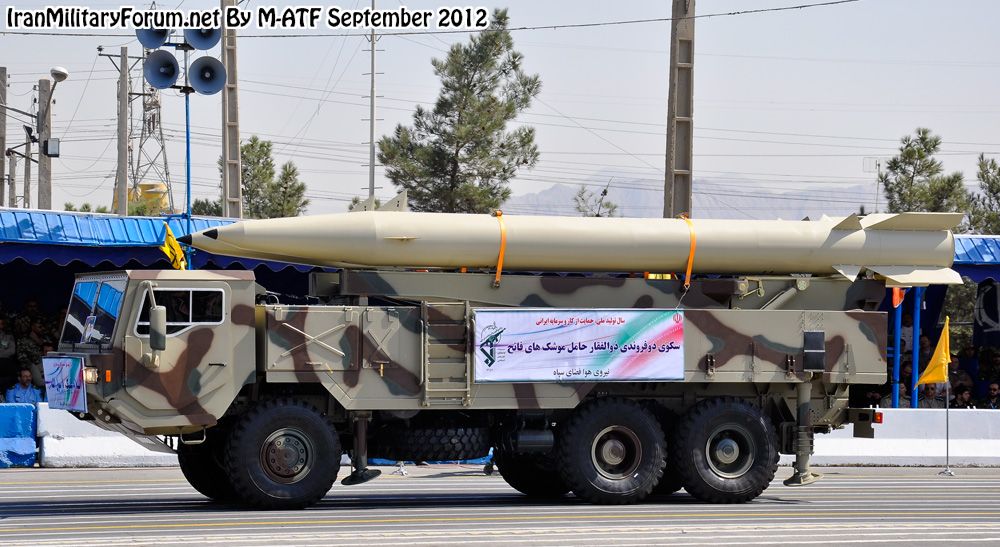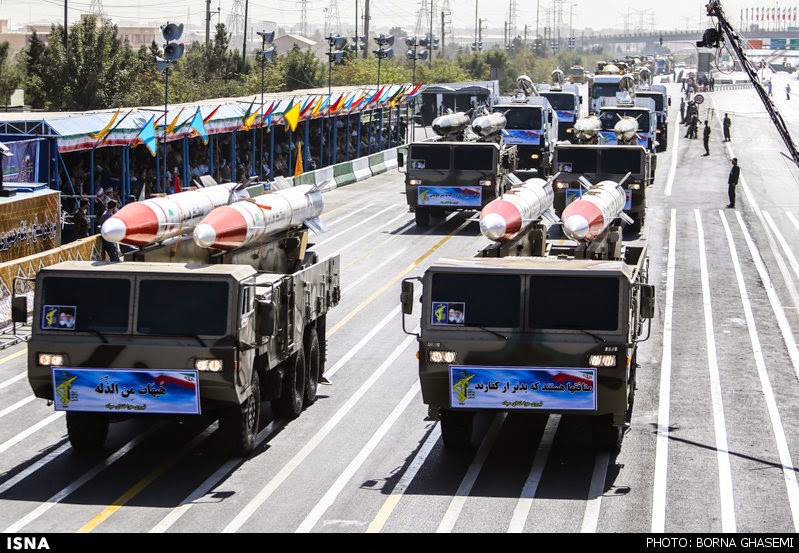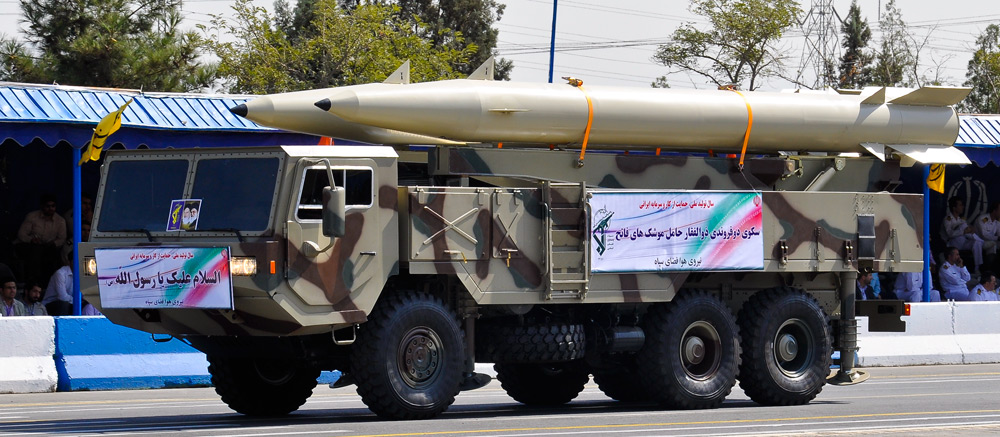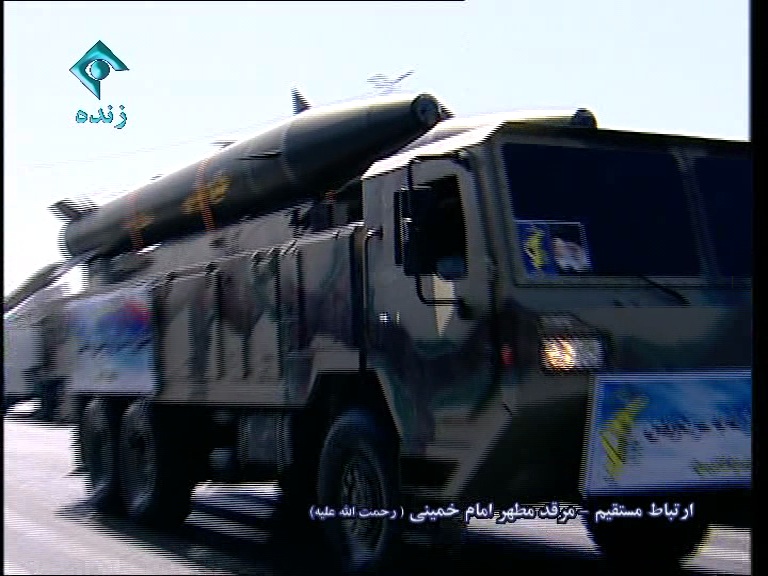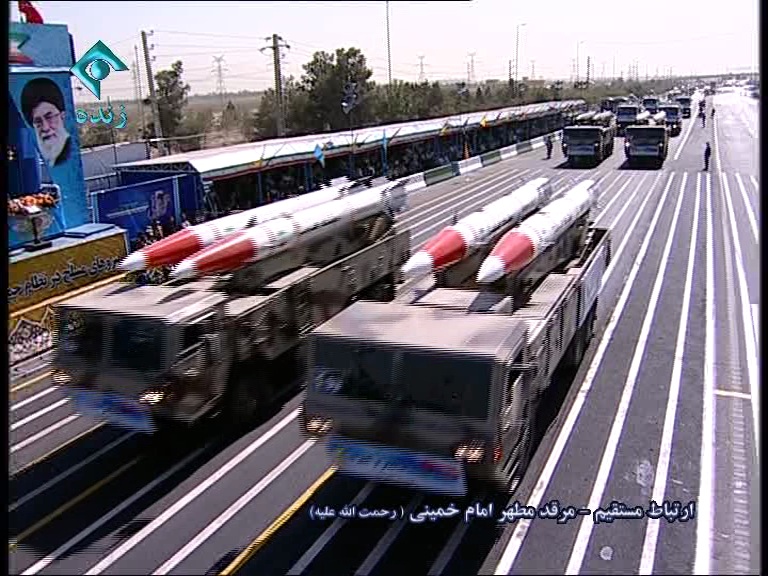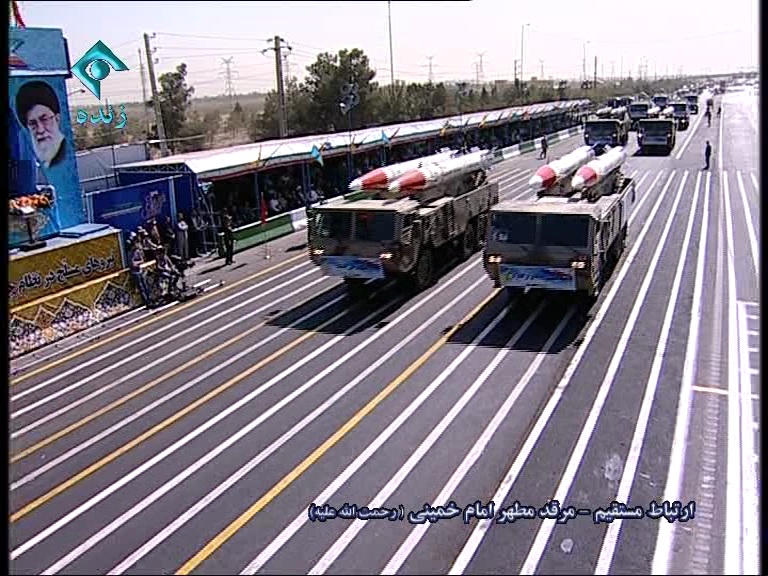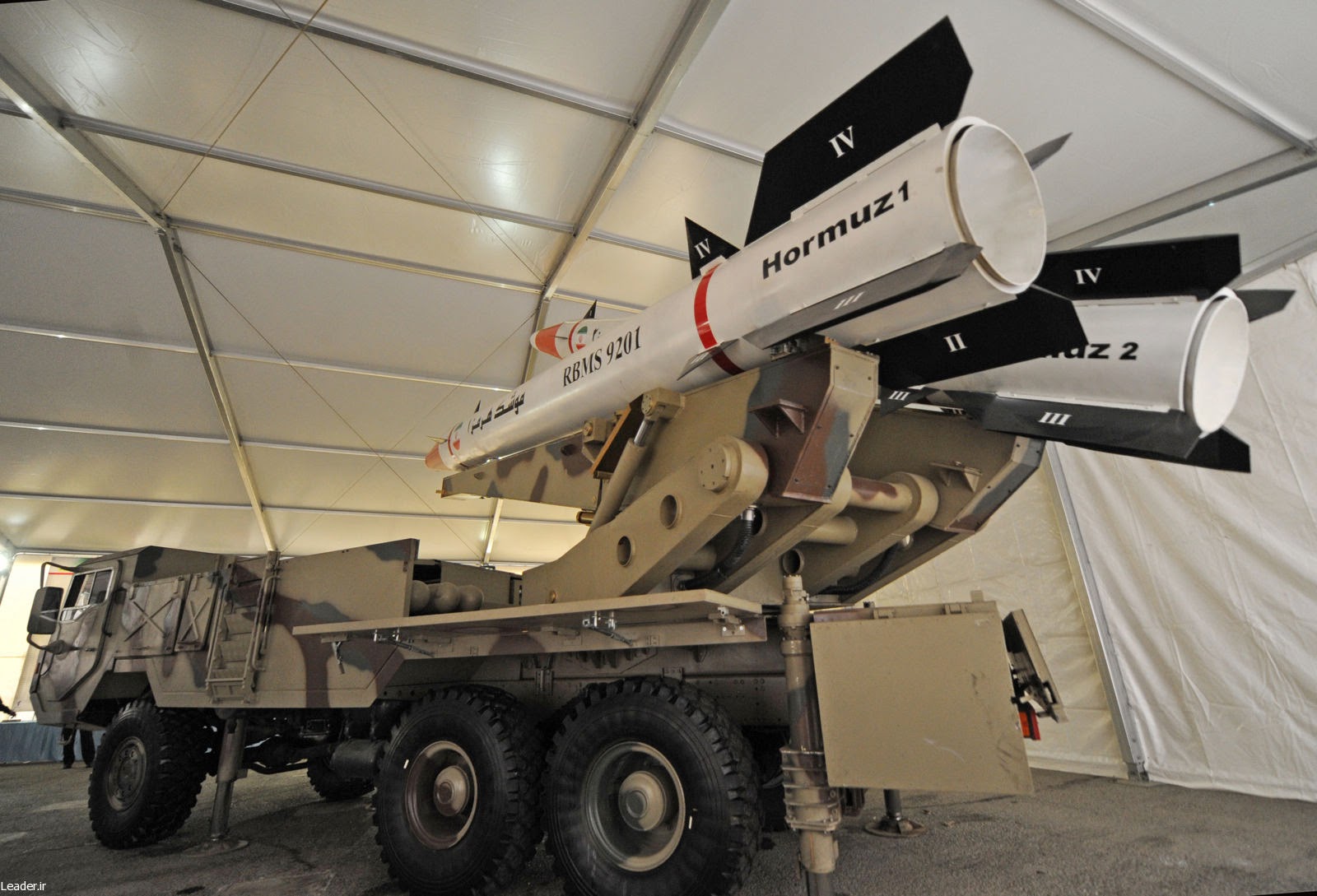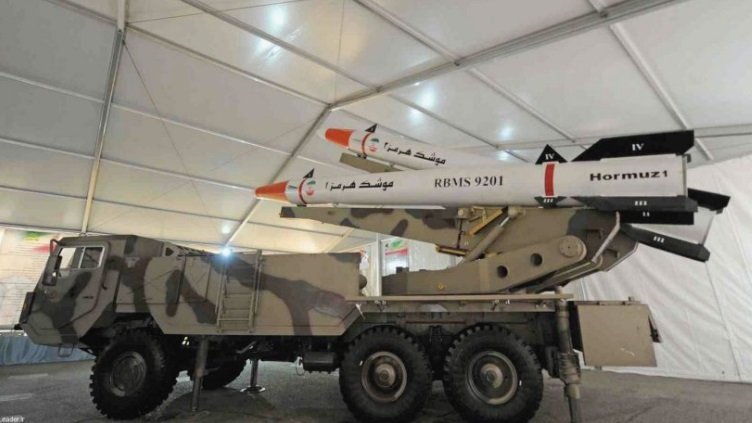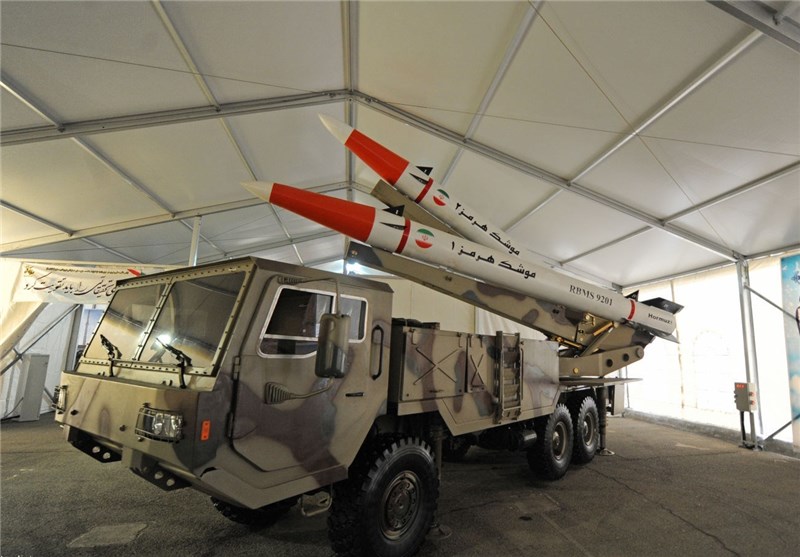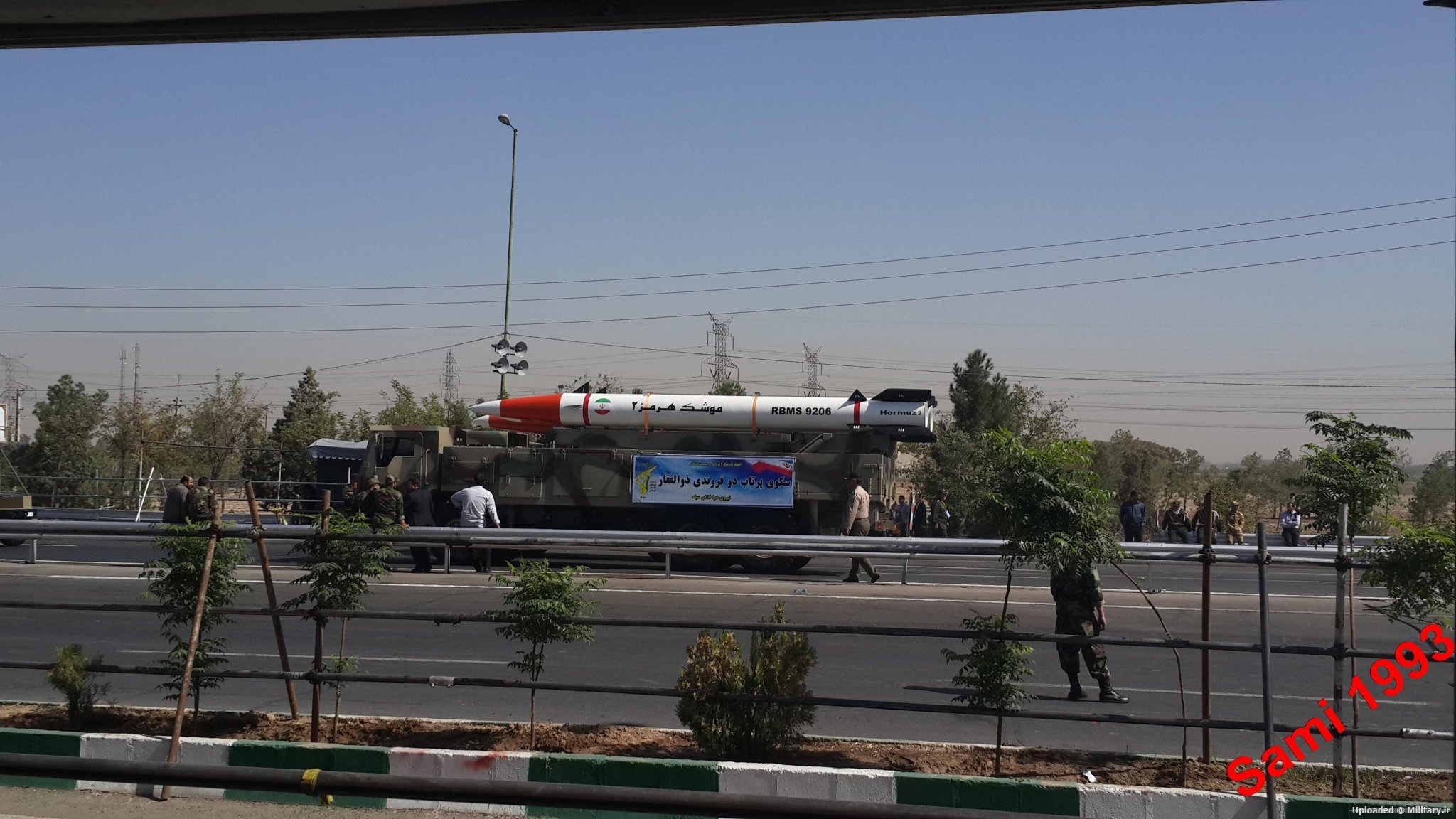Scorpion
THINK TANK: SENIOR
Iran Missiles Force.
|A|Ashoura (missile) |B| BM25 Musudan |F| Fajr 7- Fajr-3 (missile)- Fateh-110 |G| Ghadr-110 |N| Naze'at |P| Persian Gulf (missile) Project Koussar |Q| Qiam 1 |S|Safir (rocket)-Sejjil-Shahab-1Shahab-2 Shahab-3 - Shahab-4 - Shahab-5 - Shahab-6 |Z| Zelzal-1 - Zelzal-2 - Zelzal-3.

The Islamic Republic’s arsenal now includes several types of short-range and medium-range missiles. Estimates vary on specifics, and Iran has exaggerated its capabilities in the past. But there is widespread consensus that Tehran has acquired and creatively adapted foreign technology to continuously increase the quality and quantity of its arsenal. It has also launched an ambitious space program that works on some of the same technology. The arsenal includes:
Shahab missiles: Since the late 1980s, Iran has purchased additional short- and medium-range missiles from foreign suppliers and adapted them to its strategic needs. The Shahabs, Persian for “meteors,” were long the core of Iran’s program. They use liquid fuel, which involves a time-consuming launch. They include:
The Shahab-1 is based on the Scud-B. (The Scud series was originally developed by the Soviet Union). It has a range of about 300 kms or 185 miles.
The Shahab-2 is based on the Scud-C. It has a range of about 500 kms, or 310 miles. In mid-2010, Iran is widely estimated to have between 200 and 300 Shahab-1 and Shahab-2 missiles capable of reaching targets in neighboring countries.
The Shahab-3 is based on the Nodong, which is a North Korean missile. It has a range of about 900 km or 560 miles. It has a nominal payload of 1,000 kg. A modified version of the Shahab-3, renamed the Ghadr-1, began flight tests in 2004. It theoretically extends Iran’s reach to about 1,600 km or 1,000 miles, which qualifies as a medium-range missile. But it carries a smaller, 750-kg warhead.
Although the Ghadr-1 was built with key North Korean components, Defense Minister Ali Shamkhani boasted at the time, “Today, by relying on our defense industry capabilities, we have been able to increase our deterrent capacity against the military expansion of our enemies.”
Sajjil missiles: Sajjil means “baked clay” in Persian. These are a class of medium-range missiles that use solid fuel, which offer many strategic advantages. They are less vulnerable to preemption because the launch requires shorter preparation – minutes rather than hours. Iran is the only country to have developed missiles of this range without first having developed nuclear weapons.
This family of missiles centers on the Sajjil-2, a domestically produced surface-to-surface missile. It has a medium-range of about 2,200 km or 1,375 miles when carrying a 750-kg warhead. It was test fired in 2008 under the name,Sajjil. The Sajjil-2, which is probably a slightly modified version, began test flights in 2009. This missile would allow Iran to “target any place that threatens Iran,” according to Brig. Gen. Abdollah Araghi, a Revolutionary Guard commander.
The Sajjil-2, which is unlikely to become operational before 2012, is the most likely nuclear delivery vehicle—if Iran decides to develop an atomic bomb. But it would need to build a bomb small enough to fit on the top of this missile, which would be a major challenge.
The Sajjil program’s success indicates that Iran’s long-term missile acquisition plans are likely to focus on solid-fuel systems. They are more compact and easier to deploy on mobile launchers. They require less time to prepare for launch, making them less vulnerable to preemption by aircraft or other missile defense systems.
Iran could attempt to use Sajjiltechnologies to produce a three-stage missile capable of flying 3,700 km or 2,200 miles. But it is unlikely to be developed and actually fielded before 2015.
Space program: Iran’s ambitious space program provides engineers with critical experience developing powerful booster rockets and other skills that could be used in developing longer-range missiles, including ICBMs.
The Safir, which means “messenger” or “ambassador” in Persian, is the name of the carrier rocket that launched Iran’s first satellite into space in 2009. It demonstrated a new sophistication in multistage separation and propulsion systems.
The Simorgh, which is the Persian name of a benevolent, mythical flying creature, is another carrier rocket to launch satellites. A mock-up was unveiled in 2010. It has a cluster of four engines and indicates that Iran’s space program is making progress in its long-term goals.
|A|Ashoura (missile) |B| BM25 Musudan |F| Fajr 7- Fajr-3 (missile)- Fateh-110 |G| Ghadr-110 |N| Naze'at |P| Persian Gulf (missile) Project Koussar |Q| Qiam 1 |S|Safir (rocket)-Sejjil-Shahab-1Shahab-2 Shahab-3 - Shahab-4 - Shahab-5 - Shahab-6 |Z| Zelzal-1 - Zelzal-2 - Zelzal-3.

Shahab missiles: Since the late 1980s, Iran has purchased additional short- and medium-range missiles from foreign suppliers and adapted them to its strategic needs. The Shahabs, Persian for “meteors,” were long the core of Iran’s program. They use liquid fuel, which involves a time-consuming launch. They include:
The Shahab-1 is based on the Scud-B. (The Scud series was originally developed by the Soviet Union). It has a range of about 300 kms or 185 miles.
The Shahab-2 is based on the Scud-C. It has a range of about 500 kms, or 310 miles. In mid-2010, Iran is widely estimated to have between 200 and 300 Shahab-1 and Shahab-2 missiles capable of reaching targets in neighboring countries.
The Shahab-3 is based on the Nodong, which is a North Korean missile. It has a range of about 900 km or 560 miles. It has a nominal payload of 1,000 kg. A modified version of the Shahab-3, renamed the Ghadr-1, began flight tests in 2004. It theoretically extends Iran’s reach to about 1,600 km or 1,000 miles, which qualifies as a medium-range missile. But it carries a smaller, 750-kg warhead.
Although the Ghadr-1 was built with key North Korean components, Defense Minister Ali Shamkhani boasted at the time, “Today, by relying on our defense industry capabilities, we have been able to increase our deterrent capacity against the military expansion of our enemies.”
Sajjil missiles: Sajjil means “baked clay” in Persian. These are a class of medium-range missiles that use solid fuel, which offer many strategic advantages. They are less vulnerable to preemption because the launch requires shorter preparation – minutes rather than hours. Iran is the only country to have developed missiles of this range without first having developed nuclear weapons.
This family of missiles centers on the Sajjil-2, a domestically produced surface-to-surface missile. It has a medium-range of about 2,200 km or 1,375 miles when carrying a 750-kg warhead. It was test fired in 2008 under the name,Sajjil. The Sajjil-2, which is probably a slightly modified version, began test flights in 2009. This missile would allow Iran to “target any place that threatens Iran,” according to Brig. Gen. Abdollah Araghi, a Revolutionary Guard commander.
The Sajjil-2, which is unlikely to become operational before 2012, is the most likely nuclear delivery vehicle—if Iran decides to develop an atomic bomb. But it would need to build a bomb small enough to fit on the top of this missile, which would be a major challenge.
The Sajjil program’s success indicates that Iran’s long-term missile acquisition plans are likely to focus on solid-fuel systems. They are more compact and easier to deploy on mobile launchers. They require less time to prepare for launch, making them less vulnerable to preemption by aircraft or other missile defense systems.
Iran could attempt to use Sajjiltechnologies to produce a three-stage missile capable of flying 3,700 km or 2,200 miles. But it is unlikely to be developed and actually fielded before 2015.
Space program: Iran’s ambitious space program provides engineers with critical experience developing powerful booster rockets and other skills that could be used in developing longer-range missiles, including ICBMs.
The Safir, which means “messenger” or “ambassador” in Persian, is the name of the carrier rocket that launched Iran’s first satellite into space in 2009. It demonstrated a new sophistication in multistage separation and propulsion systems.
The Simorgh, which is the Persian name of a benevolent, mythical flying creature, is another carrier rocket to launch satellites. A mock-up was unveiled in 2010. It has a cluster of four engines and indicates that Iran’s space program is making progress in its long-term goals.





